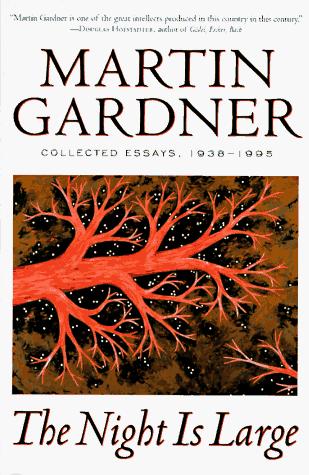Page 1 of 1
APOD: October Skylights (2011 Oct 28)
Posted: Fri Oct 28, 2011 4:06 am
by APOD Robot
 October Skylights
Explanation:
October Skylights
Explanation: As northern hemisphere nights grow longer,
October is a good month for spotting auroras, or even other
eerie apparitions after dark. And this week the night sky did not disappoint. On October 24th a solar
coronal mass ejection impacted planet Earth's magnetosphere triggering far ranging auroral displays. On that night,
this dramatic silhouette against deep red and beautiful green curtains of shimmering light was captured near Whitby, Ontario, Canada. But
auroras were reported even farther south, in US states like Alabama, Kansas, and
Oklahoma at latitudes rarely haunted by the northern lights. Well above 100 kilometers, at the highest altitudes infused by the auroral glow, the
red color comes from the excitation of oxygen atoms.
[/b]
Re: APOD: October Skylights (2011 Oct 28)
Posted: Fri Oct 28, 2011 4:18 am
by Beyond
I think a lot of people would like to see something like this in about two months.
Re: APOD: October Skylights (2011 Oct 28)
Posted: Fri Oct 28, 2011 9:19 am
by owlice
I'd like to see something like this
now!
More auroras are pictured
here.
Re: APOD: October Skylights (2011 Oct 28)
Posted: Fri Oct 28, 2011 9:42 am
by starstruck
With the spooky outline of that broken tree's silhouette against the glowing aurora, this makes a really apt picture for the hallowe'en weekend. Of course, if there could have been an owl or something sitting on one of those branches too . . well even better, but hey, I'll take it as it is! Well done!

Re: APOD: October Skylights (2011 Oct 28)
Posted: Fri Oct 28, 2011 12:47 pm
by NoelC
All I can say is this: I hope to see an aurora one day.
For those of you who have seen them, are the colors visible to the unaided eye?
-Noel
Re: APOD: October Skylights (2011 Oct 28)
Posted: Fri Oct 28, 2011 1:02 pm
by jman
NoelC wrote:All I can say is this: I hope to see an aurora one day.
For those of you who have seen them, are the colors visible to the unaided eye?
-Noel
Absolutely!
Re: APOD: October Skylights (2011 Oct 28)
Posted: Fri Oct 28, 2011 1:24 pm
by orin stepanek
I liked the aurora picture; kudos Malcolm!


Re: APOD: October Skylights (2011 Oct 28)
Posted: Fri Oct 28, 2011 1:34 pm
by rstevenson
NoelC wrote:For those of you who have seen them, are the colors visible to the unaided eye?
Spectacularly so!
Rob
Re: APOD: October Skylights (2011 Oct 28)
Posted: Fri Oct 28, 2011 3:11 pm
by kaigun
Even though I live in Alaska now and see them fairly often, the most spectacular aurora I ever saw was in Washington state 30 years ago. That was the only time I have ever seen the brilliant red.
Re: APOD: October Skylights (2011 Oct 28)
Posted: Fri Oct 28, 2011 10:11 pm
by saturn2
A solar coronal mass ejection impacts planet Earth magnetosphere and it produces auroras.
This solar energy is of magnitude very important.
Possibly it can to dostort the comunications of the Earth.
Re: APOD: October Skylights (2011 Oct 28)
Posted: Fri Oct 28, 2011 10:27 pm
by Wolf kotenberg
Murphy's law strikes again, with perfection. Raining here in the NORTHWEST.
Re: APOD: October Skylights (2011 Oct 28)
Posted: Sat Oct 29, 2011 6:11 am
by Bilbobaker
Bug and tongue tree.
Re: APOD: October Skylights (2011 Oct 28)
Posted: Sat Nov 19, 2011 10:51 am
by georgedavid
I would love to be in a place like this now !!!

The Night is Large
Posted: Sat Nov 19, 2011 1:13 pm
by neufer
.
APOD Robot wrote: October Skylights
Explanation:
October Skylights
Explanation: As northern hemisphere nights grow longer,
October is a good month for spotting auroras, or even other
eerie apparitions after dark. And this week the night sky did not disappoint. On October 24th a solar
coronal mass ejection impacted planet Earth's magnetosphere triggering far ranging auroral displays. On that night,
this dramatic silhouette against deep red and beautiful green curtains of shimmering light was captured near Whitby, Ontario, Canada. But
auroras were reported even farther south, in US states like Alabama, Kansas, and
Oklahoma at latitudes rarely haunted by the northern lights. Well above 100 kilometers, at the highest altitudes infused by the auroral glow, the
red color comes from the excitation of oxygen atoms.
 October Skylights
October Skylights